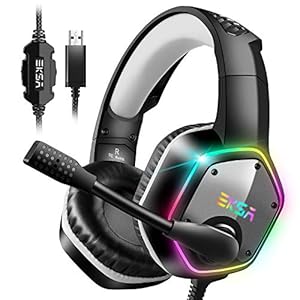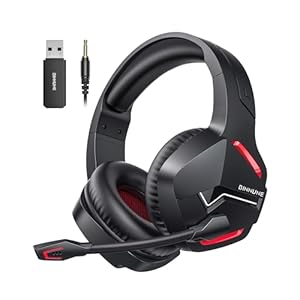
When considering gaming headsets, pondering the ideal frequency range is crucial for an immersive gaming experience. The frequency range directly impacts the depth and clarity of sounds you hear while gaming. Having a wider range can significantly enhance your gameplay by providing a more detailed sonic landscape. But, what specific factors should you consider when determining the perfect frequency range for your gaming headset? Stay tuned to discover how the frequency range can make or break your gaming adventures.
Importance of Frequency Range
Understanding the significance of frequency range is crucial when selecting a gaming headset that suits your audio preferences and gaming experience. The frequency range refers to the spectrum of audio frequencies that the headset can produce, from the lowest to the highest tones.
A wider frequency range means the headset can reproduce a broader range of sounds, resulting in richer audio quality. When gaming, this can enhance your experience by allowing you to hear subtle in-game sounds like footsteps or distant gunfire more clearly.
Moreover, an optimal frequency range ensures that you aren’t missing out on important audio cues that can give you a competitive edge in gameplay. For instance, a wider frequency range can help you pinpoint the direction of approaching enemies or immerse you in the game’s soundtrack.
In contrast, a limited frequency range may result in audio that feels flat or lacking in depth, potentially detracting from your overall gaming experience. Therefore, when choosing a gaming headset, pay attention to the frequency range to ensure it aligns with your audio preferences and gaming needs.
Optimal Range for Gaming Audio
What’s the ideal frequency range for optimal gaming audio experience with a headset?
When it comes to gaming audio, the optimal frequency range for a headset typically falls between 20 Hz to 20 kHz. This range covers the full spectrum of sounds that the human ear can perceive, ensuring that you don’t miss out on any crucial audio cues while gaming.
The lower end of the range, around 20 Hz, allows you to feel deep bass rumblings and explosions in games, adding a sense of immersion. On the other hand, the upper end of the range, around 20 kHz, captures the high-pitched sounds like footsteps, gunfire, and environmental details that are essential for spatial awareness and pinpointing enemy locations.
Factors Influencing Frequency Range
To understand the factors influencing the frequency range of gaming headsets, consider how hardware components and design choices play a significant role in determining the audio capabilities of the headset. The quality of drivers, which convert electrical signals into sound waves, directly impacts the headset’s frequency response. Larger drivers can reproduce lower frequencies more effectively, enhancing bass performance. Additionally, the material used for the diaphragm of the driver influences how accurately it can reproduce sound across the frequency spectrum.
Another crucial factor is the headset’s enclosure design. Closed-back designs offer better isolation and can enhance bass response by preventing sound leakage. On the other hand, open-back designs provide a more natural soundstage but may sacrifice some bass extension. The shape and size of ear cups also play a role in how frequencies are transmitted and perceived by the listener. Overall, a combination of these hardware components and design choices determines the frequency range a gaming headset can effectively reproduce, impacting the gaming experience.
Choosing the Right Gaming Headset
When selecting a gaming headset, consider the specific features that align with your gaming preferences and audio requirements. Start by determining whether you prefer wired or wireless headsets. Wired options typically provide lower latency, ensuring that sound is synchronized with gameplay, while wireless headsets offer more freedom of movement.
Next, think about the headset’s compatibility with your gaming platform. Ensure it’s compatible with your PC, console, or mobile device. Comfort is crucial for long gaming sessions, so look for headsets with adjustable headbands, plush ear cushions, and lightweight designs.
Sound quality is paramount in gaming, so prioritize headsets with surround sound capabilities or virtual spatial audio for an immersive experience. Additionally, consider features like noise-cancellation microphones for clear communication with teammates.
Trending Products














